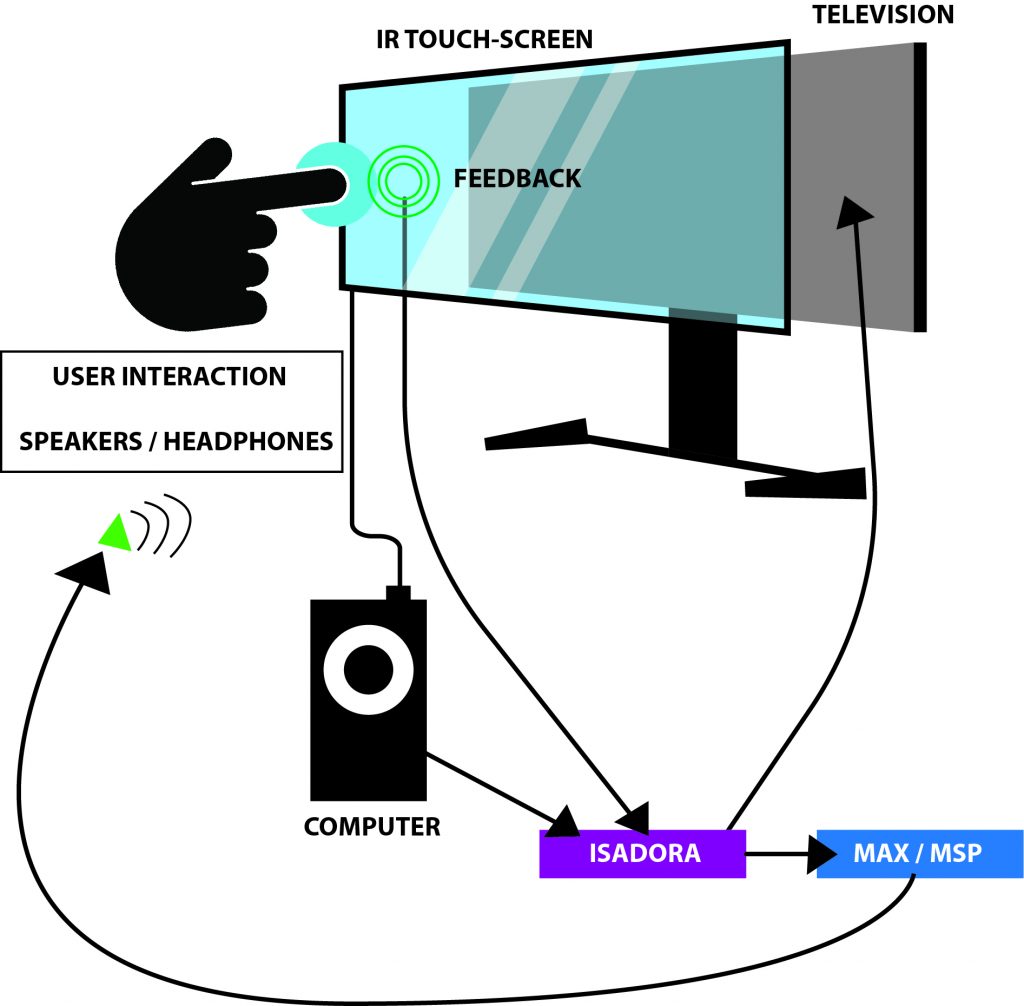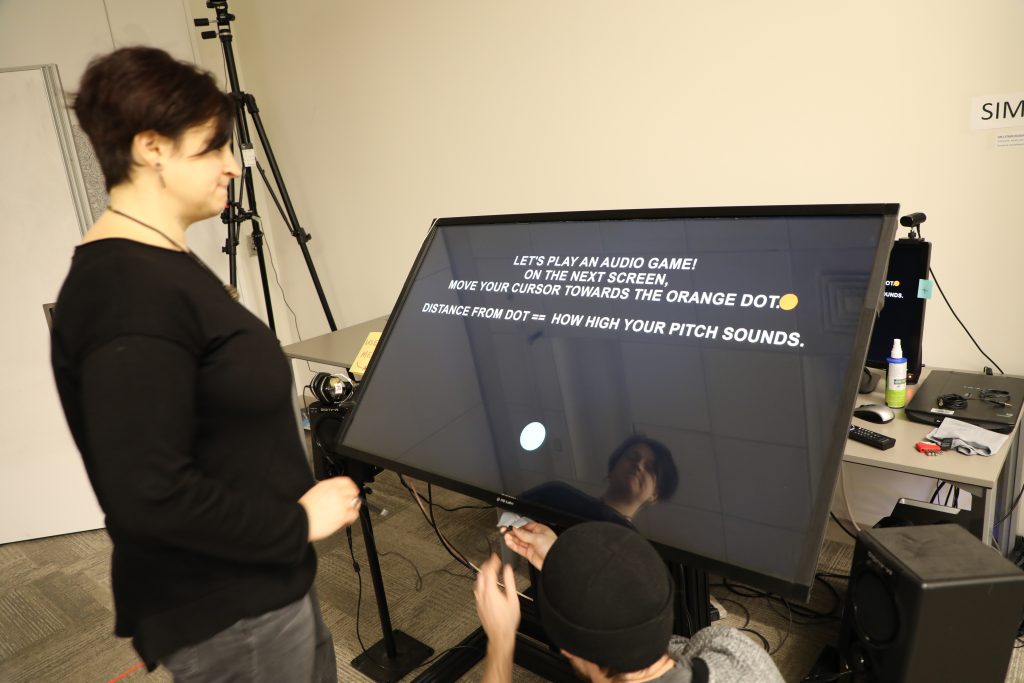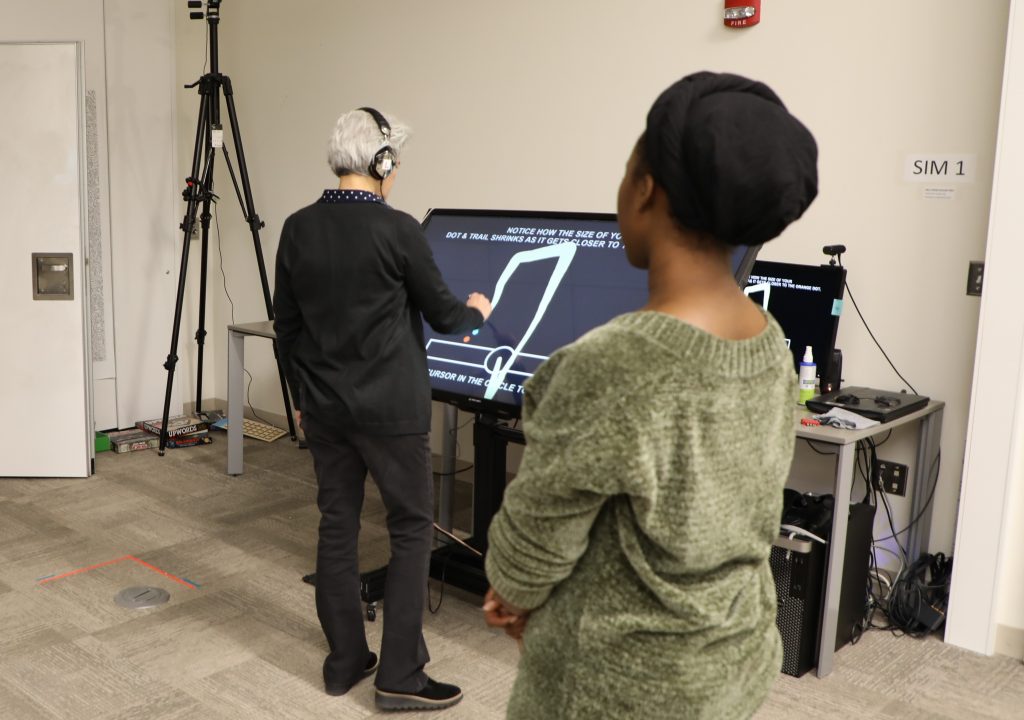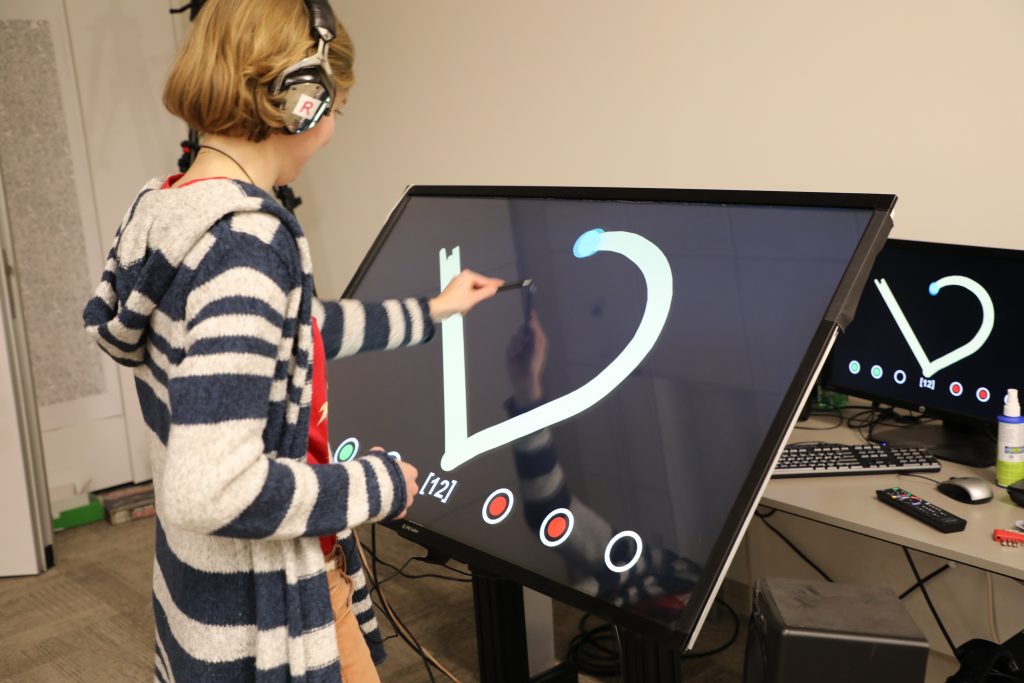Olsen Cycle 3 – Final – Audio Game
Posted: December 11, 2019 Filed under: Uncategorized Leave a comment »Cycle 3:
I decided to move forward with the Audio game as previously mentioned. Through the last few weeks, I had random participants test the game and let me know if any part had any particular confusion to it.
Some of the comments that were mentioned included:
- How would this be different if it were a touch screen instead of a mouse?
- How should I know when I need to listen?
- Is there a way to make the experience move forward at a quicker pace?
- Is there modes of play? Easy, Medium, Hard? What would those be?
—I had considered using the Kinect as a means to play. That being said, I took the time to become part of the Beta testing group for Isadora. Using the Kinect data, it was difficult to calibrate all of the settings for every time the experience would be set up. It was also somewhat buggy, and didn’t necessarily follow the body as planned.
—I hooked up the OpenNi and Skeleton decoder to get the x/y data from the hand of the user, but because of the lag or loss of input, it made the experience unpleasant. I also attempted to use the depth from the Orbecc sensor in the MoLab. This would use the top-down orientation of the depth to create a ‘blob’ to be tracked. Unfortunately, as well, the feedback was buggy and difficult to be managed.
–I ended up going with the IR sensor touch screen placed on top of the monitor as the solution. This allowed a user to use either their hand, a touch-friendly pen, and headphones (simultaneously send to speakers as well) for the experience.
—Below is a visual representation of the layout, including photos from the final day of people playing the game:

—Below is an example of the actual game being played. It goes through the Easy / Medium modes. If you happen to win the experience, you get a nice treat of music and visuals at the end! Note: the losing screen is not shown, though if you can imagine: No music, and no visuals. Just a plain, “You Lose!” screen with the same options as the ‘Win’ screen.
—I decided to move forward with the project in a way that made it as easy for the user to get used to using a touch screen. This prevented the player from scribbling all over the screen with a mouse to try to find the dot, and added a level of difficulty that didn’t let the participant “cheat” to win.
I also ended up throwing in the different difficulties for the experience.
>>Easy Mode<<
—The user gets a visual trail to track where they’ve been; this includes shrinking the trail as the user gets closer to the target. The user’s cursor shrinks as it gets closer. The audio will also aid in their efforts.
>>Medium Mode<<
—The user’s cursor shrinks as it gets closer. The audio will also aid in their efforts.
>>Hard Mode<<
—Only the audio will aid in their efforts. (Using headphones is the best way for this experience)
The actors used within the Isadora project include:
- Keyboard Watcher
- Mouse Watcher
- Stage Mouse Watcher
- Trigger Delay
- Pulse Generator
- Text Draw
- Shape
- Sound Player
- Video Player
- Jump++
- Enter Scene Trigger
- Enter Scene Value
- Gate
- Dual Trigger Watcher
- Calculator
- Math
- Route
- Counter
- Envelope Generator
- OSC multi-transmit
- Projector
- Multi-mix
- Ease In-Out (2D)
- Inside Range
- Envelope Generator
- Limit-Scale Value
- Shapes
The objects used within the Max / Msp patch include:
- udprecieve
- message boxes
- unpack
- scale
- gate
- toggle
- cycle~
- ezdac~
Outcome:
—I think that my game was well received. Everything about the experience taught me more about working within the limitations of Isadora. I would go back and change a few things about the interaction — like some idle music during the sections where the user needs to read. Or, I might narrate those pages altogether to ‘make’ the user listen, rather than expect them to read the text to it’s full extent. I would also want to add some videos as the explanation screens; and having them ‘catch’ a few of the dots before moving forward seems like it would benefit the experience–rather than throwing them into the experience too quickly. All in all, I see myself using the program more in tandem with Max/MSP, and perhaps Touch Designer, for future projects that could be installations!
-Taylor Olsen



